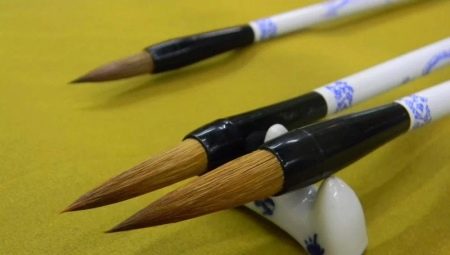Calligraphy is a beautiful, ornate handwriting. There can be many tools for such writing, but today we’ll talk about brushes. It is believed that calligraphy originated in China, so we will consider the features of Chinese brushes.
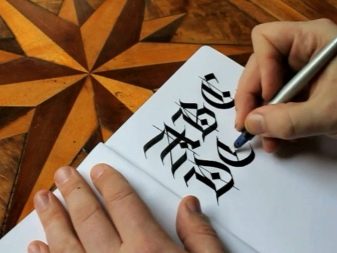
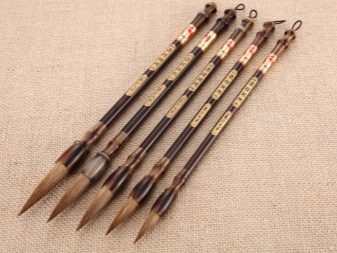
Features
Specialists prefer to select a specific tool for each performance technique. According to some reports, there are about 200 different types of brushes. For the convenience of users, markers write information on the type of hieroglyphs or the stylistic direction for which it is intended, as well as on what exactly the brush is made of.
Some manufacturers also indicate the percentage of the pile.
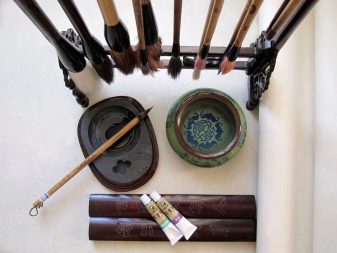
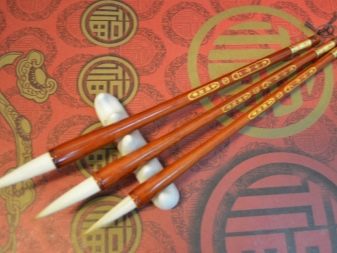
How to choose?
Before choosing one or another variant of the tool, it should be understood that all brushes for Chinese writing should be made of natural fur. This is due to the fact that this material absorbs paint and ink better, and also provides a more comfortable glide on paper than brushes made from synthetic raw materials. Calligraphy brushes can be used not only for writing, but also for some types of painting.
There are several classifications of calligraphy brushes. Consider them all.
- Large, very large, medium and very small brushes are distinguished by size.
- There is a short, medium and elongated hair along the length of the pile of the working part. The longer the pile, the more elegant the line can be drawn. However, the more difficult it is to work with such a tool.
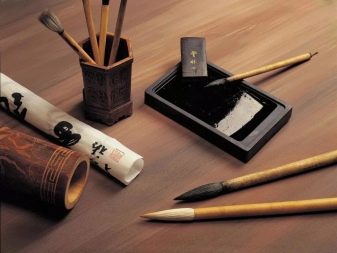
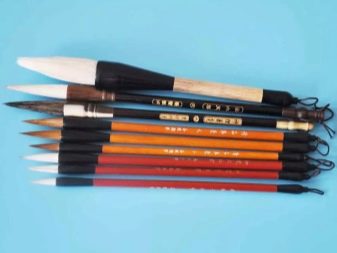
Brushes are divided by degree of rigidity.
- Yanhao - soft brushes. They are usually made from goat hair. It is usually easy and convenient to work with them, the hand does not strain and does not get tired.Soft fibers hold more moisture, so the image is better.
- Lanhao - hard brushes. In literal translation, this word means "yellow wolf", so they are often called wolf. In fact, dog hair is used to make them. Horse hair is considered to be of better quality, as well as bear hair, deer and badger fur. Such instances are more expensive. They are intended for drawing a thin outline, as well as for a clearer picture of small details.
- Jianhao is a combined option. Such tools may consist of the hair of different animals of varying degrees of stiffness, for example, rabbit and dog or goat and badger fur. Combined brushes allow you to create clear, correct lines, hold ink well.
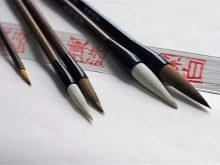
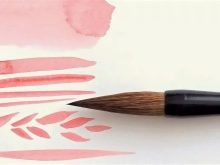

For the manufacture of calligraphy brushes, the fur of various animals is used. Here are the most popular varieties.
- Goat fur soft and obedient, brushes are ideal as the first working tool, have a long pile, medium or large size.
- Speakers - tougher fur, tools from it can be of any size, suitable for detailed drawing of details, recommended for more experienced specialists.
- Rabbit fur brushes They have hard fur, a small size of the hair, designed to write hieroglyphs of small size. This is a rare and expensive instance.
- Chicken or Swan Brush in its pure form are extremely rare, and most often combined with a fur column. Pretty complicated to use.
- Horsehair also rarely used for calligraphy, it is usually faked with goat fur or other long pile.
- Pork bristles - a very hard material, therefore, in the manufacture of brushes, the bristles are split in a special way. However, it is not possible to achieve particular softness, so it is extremely inconvenient to use such tools when writing.
- Plant fiber - they mean bamboo, reed or fibers of other trees that pre-split and give them some softness. However, such brushes cannot be called soft; they are used exclusively for drawing large hieroglyphs.
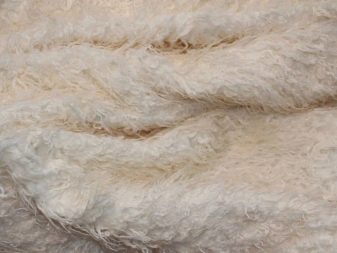
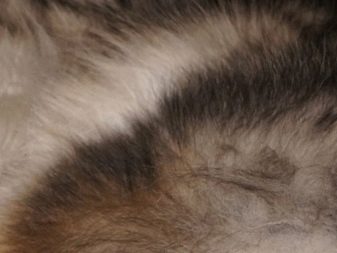
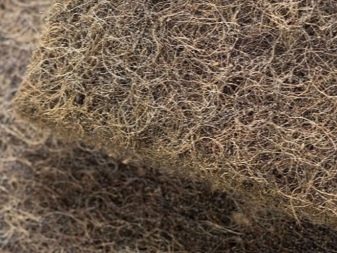
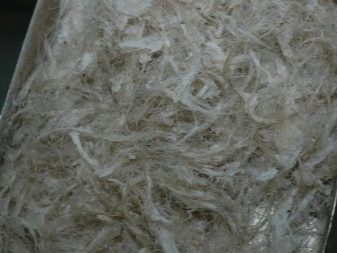
How are they made?
A feature of Chinese brushes is that it is impossible to completely modernize the entire process of their production. Some stages of their manufacture are very specific and cannot be mechanized. For example, the pile part of a tool is made exclusively by hand. Handles for economical models are made of bamboo or other wood species. Pile for such brushes is pre-impregnated with starch solution so that it is not damaged during transportation.
Before the first use, they should be soaked in water so that the starch is dissolved. For more expensive versions of Chinese calligraphy brushes, porcelain, animal bones, and other valuable materials can be used. Some brushes are inlaid with rhinestones and precious stones. Such things are often true works of art, and their cost is very high. They are not processed in starch, and they are immediately ready for work. On sale there are whole gift sets consisting of brushes of different sizes with different handles. Jade objects are considered to be especially chic - this stone is in high esteem in China.
Some brushes have a built-in reservoir for liquid - water or paint. This is especially convenient if, for example, you need to take a brush with you on the road, since there is no need to take a bottle of liquid that can spill.
Handles for such specimens are usually made of plastic. Markers have such a device - this is an attempt to combine two means for drawing at the same time. They consist of a plastic container that contains paint, and, in fact, brushes. However, this option is more suitable for amateurs, professionals prefer classical instruments.
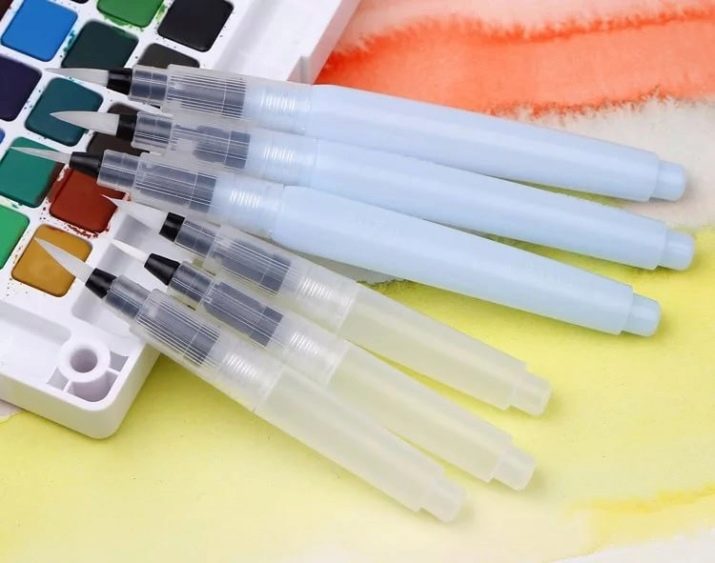
How to care?
After each use, the writing tool should be washed thoroughly in warm water to wash off traces of mascara or paint. After washing, excess moisture from the hairs should be gently wrung out with your fingers and leave the brush to dry completely. Dry writing instruments should be in a hanging position, pile down. The brush is suspended on a special stand with hooks by the eyelet - it must be on the correct device. If it is assumed that writing material will need to be transported frequently, It is recommended to purchase a special pencil case to avoid possible damage.
Like a felt-tip pen, a calligraphy brush should have a protective cap. Only if the first one serves to prevent the shaft from drying out, in the case of the brush everything is exactly the opposite - until the brush dries out, you should not put a cap on it.
If the wooden handle is varnished, this surface should not be treated with alcohol. Fresh stains from paint are washed off with a soapy warm solution.

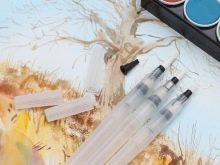
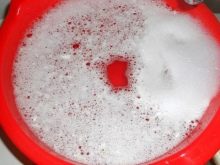
See below for how to choose a brush for calligraphy.
